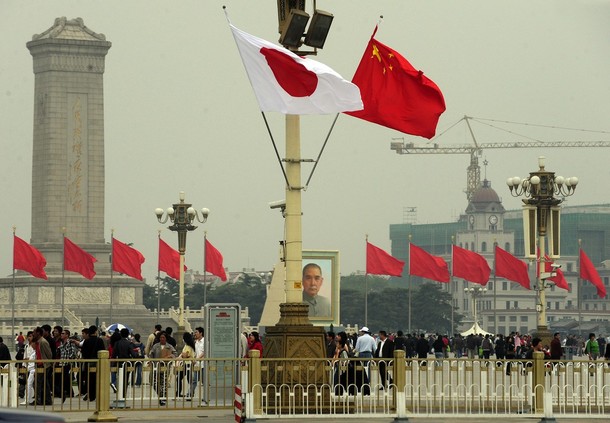Certainly Chinese activity in Pakistan is commonly viewed through this prism by external observers.
The Bush deal with India on the development of nuclear energy and the Obama administration’s subsequent initiatives on trade in military technology have set a new tone in US–India ties. The past decade has seen India emerge as an important target in regional and international security. India, it is hoped, will come to play what military thinkers call a force-multiplying role, buttressing US goals by helping to expand a zone of peace and prosperity in the Indian Ocean and in South Asia. India’s ’tilt to the United States’ is more or less taken for granted in many Western political-security circles.
In this conception, China is reciprocally cast as bent on extending its reach in the Indian Ocean, with its ‘string of pearls’ strategy embracing the development of maritime facilities not only in Pakistan but also in Sri Lanka, Bangladesh and Myanmar.
The latest excitement has focused on Chinese involvement in development of the Pakistani port of Gwadar. Gwadar lies near the Strait of Hormuz, gateway to 20 per cent of the world’s oil supplies. China poured US$198 million in the initial phase of the port’s construction after which, in 2007, the Singapore Port Authority took over its management. With neighbouring Balochistan’s ongoing disturbances and local opposition to the presence of the foreign venture, the port has not paid its way and Singapore wanted out. China stepped into the breach, how willingly it is still far from certain.
On the deal with China to run the venture at Gwadar, Indian foreign minister, Salman Khurshid observed: ‘We try to maintain a balance in our country and there is a need to take steps to maintain this balance between India and China on this [Gwadar port] issue’. Pakistani foreign ministry spokesman, Moazzam Ahmed Khan, dismissed India’s concerns, insisting that the port remains a viable business opportunity, despite the challenges.
If its development were successful, the port could become a key piece of China’s growing international energy infrastructure, cutting by half the distance between Xinjiang in Western China and the sea. Khan says the port should only be viewed as ‘an economic and commercial venture solely focused on improving development of the area [and] helping Chinese good[s] reach other markets, getting China a shortest route for its energy supplies’. At the ceremony in Islamabad for the signing of the new agreement with China, Pakistan’s President Zardari said the deal ‘gives new impetus to Pakistan-China relations. It takes a step further our political cooperation into the realm of economic cooperation’.
Nothing would ever appear to be as it might seem in South Asian diplomatic strategic affairs. In this week’s lead, Ghulam Ali argues that, despite Islamabad’s tall claims about the port’s geo-economic significance, Beijing has taken an altogether more cautious and realistic approach to its development. China remains sceptical about the port’s profitability. Both in 2001, when it agreed to finance the first phase of the port, and this year, when it has taken over administrative control of the port, Pakistan had to drag Beijing into participation in the project. China has also sought to reassure India that Gwadar that has no military-strategic significance.
‘Gwadar is not the only option for the Chinese in the Indian Ocean. It is not even the most viable option. Beijing has developed Hambantota port in Sri Lanka and built a container port facility in Chittagong in Bangladesh. In Myanmar, Beijing has built roads, dams and pipelines, and is looking to the ports of Kyaukpyu and Sittwe, regardless of the fact that the latter is being built by India. Beijing intends to lay a pipeline from Kyaukpyu to Yunnan province. Chinese oil ships from the Middle East and Africa will cross the Bay of Bengal and unload at these ports, allowing oil to be piped to Yunnan. China appears more optimistic about the future of an Arakana–Yunnan pipeline than the Gwadar–Xinjiang pipeline because it considers Myanmar capable of protecting its assets’, Ali points out.
China’s push into the Indian Ocean is an inevitable part of its need to develop efficient supply routes across the back of Asia for energy and resource supplies out of the Middle East and Africa. On the ocean, these routes are still largely secured by the US navy.
Far from spelling automatic escalation in competition between China and India, increased trade and economic interaction between the two emerging economic giants has seen China also assume the role of Indian suitor, against the backdrop of increased Sino–American strategic rivalry. India’s willingness to be wooed from both sides, for the time being at least, sits comfortably in the context of its ambitions for ‘strategic independence’ and ‘playing both ends against the middle’. And in China there is growing weight behind a ‘Look West’ strategy that gives primacy to India. ‘The Americans are looking towards the East and we are looking towards the West’, Wang Jisi, a leading Chinese strategist and major player in re-thinking Sino–Indian relations over the 1962 war, declared recently. Indeed, India and China have put in place arrangements for maritime cooperation and research, which include joint efforts against piracy and the offer of Indian naval escorts for Chinese oil tankers.
China’s Look West and India’s Look East strategies are indeed laying the foundations of transportation and other infrastructure — with expanding networks of roads, railways and pipelines — that may yet bring the two Asian continents together across the back of Southeast Asia. As Ali hints, Myanmar’s opening to the world, and its potential to act as a strategic and economic bridge across Asia brings potentially a whole new dimension to Asian connectivity.
Peter Drysdale is Editor of the East Asia Forum.

